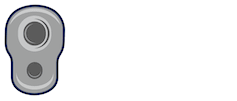The ball and dummy drill is a good one, but the drill I posted (I don't even know if it has a name, and I got it from someone else, so it can't be called the Marlow Drill. Besides, there's already a drill named after me. Don't ask. Okay, ask, because it's a funny story. God, my parenthetical tangents are long, aren't they? Is "parenthetical" even used correctly there? Anyway...) is a good one also because you know for sure there isn't going to be a boom and many veteran shooters still sometimes flinch.
I know, there's a difference between flinching and pushing the weapon to drive to the next target, so STOP YELLING AT ME!!!









